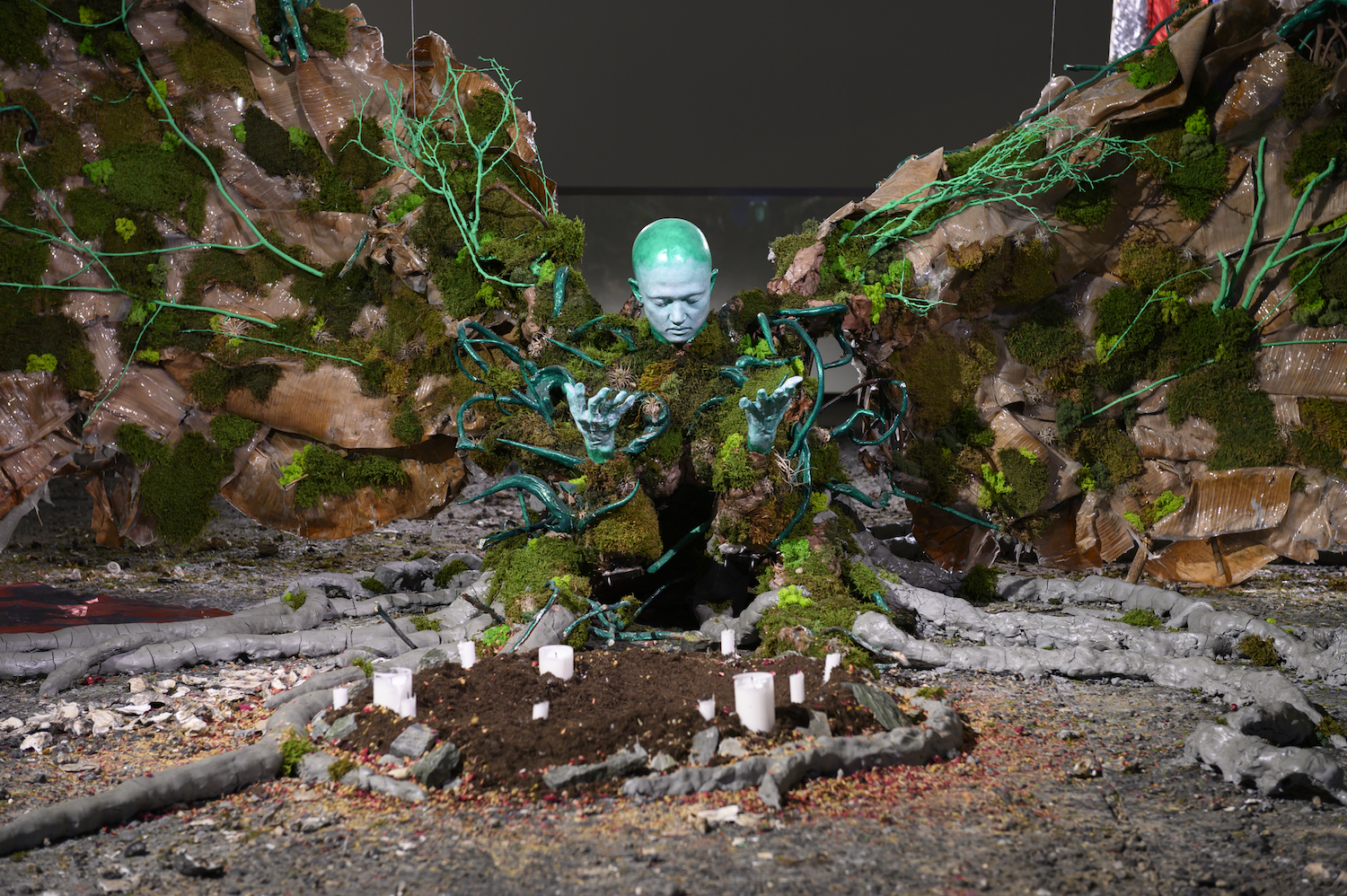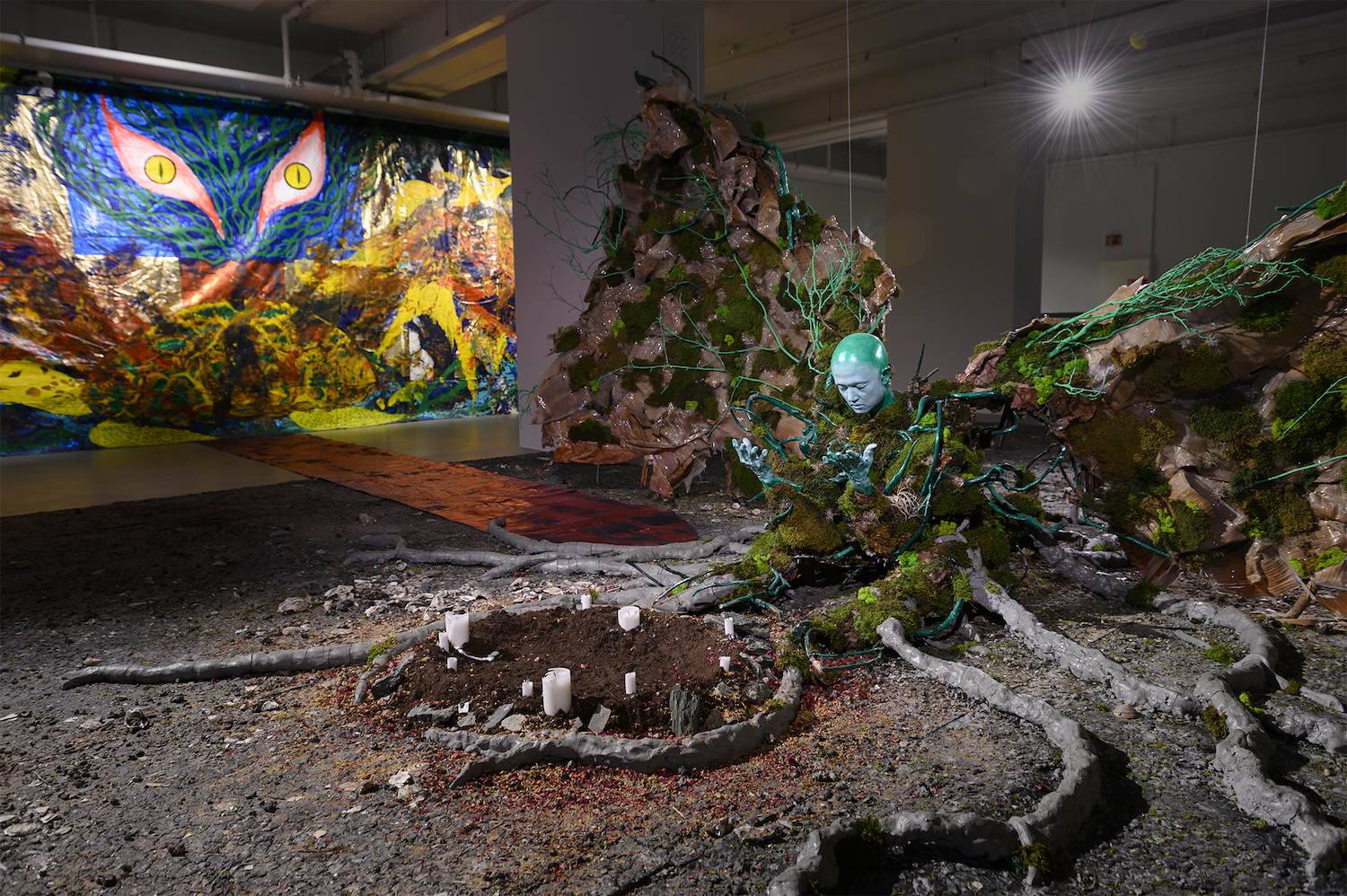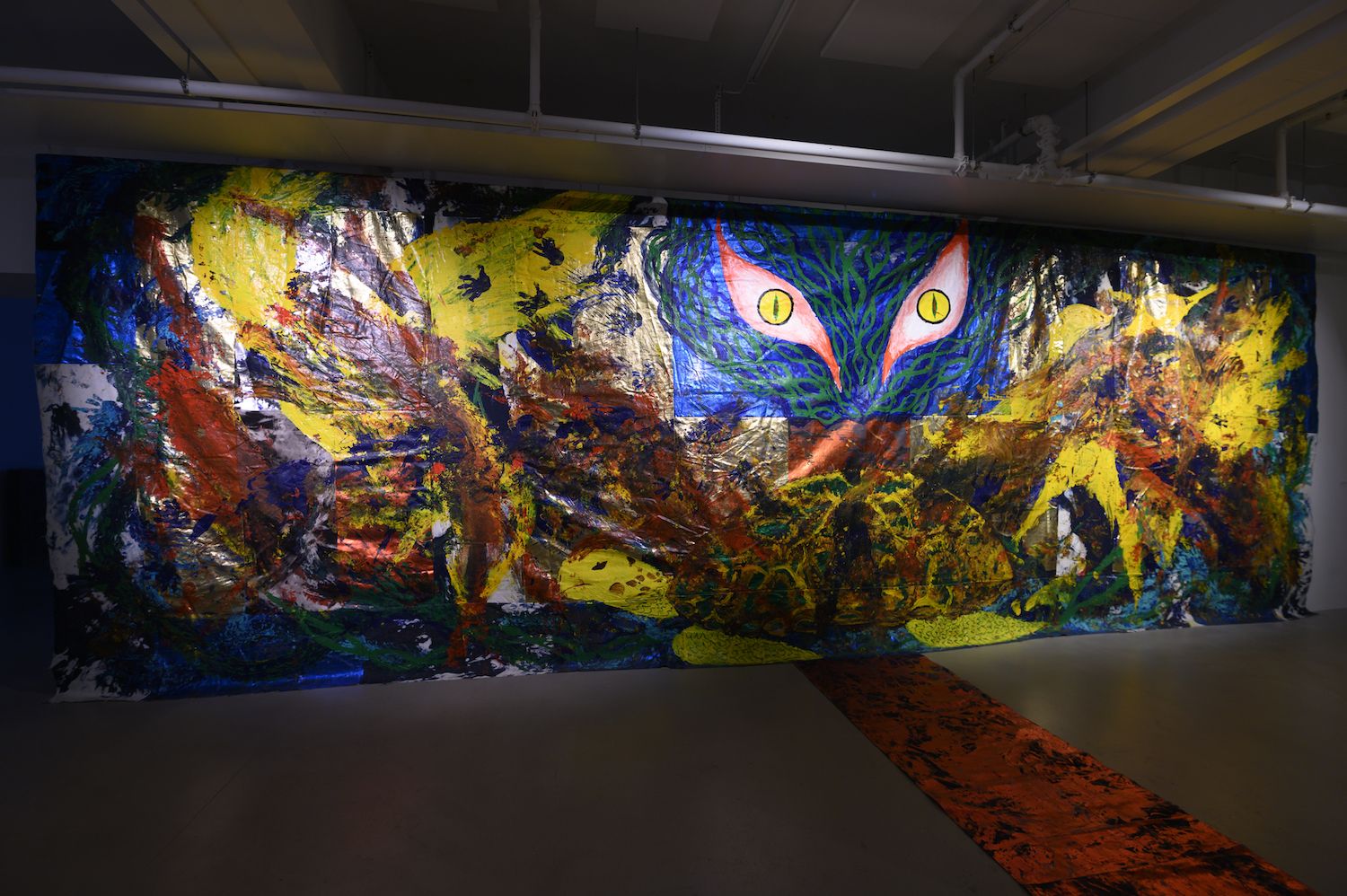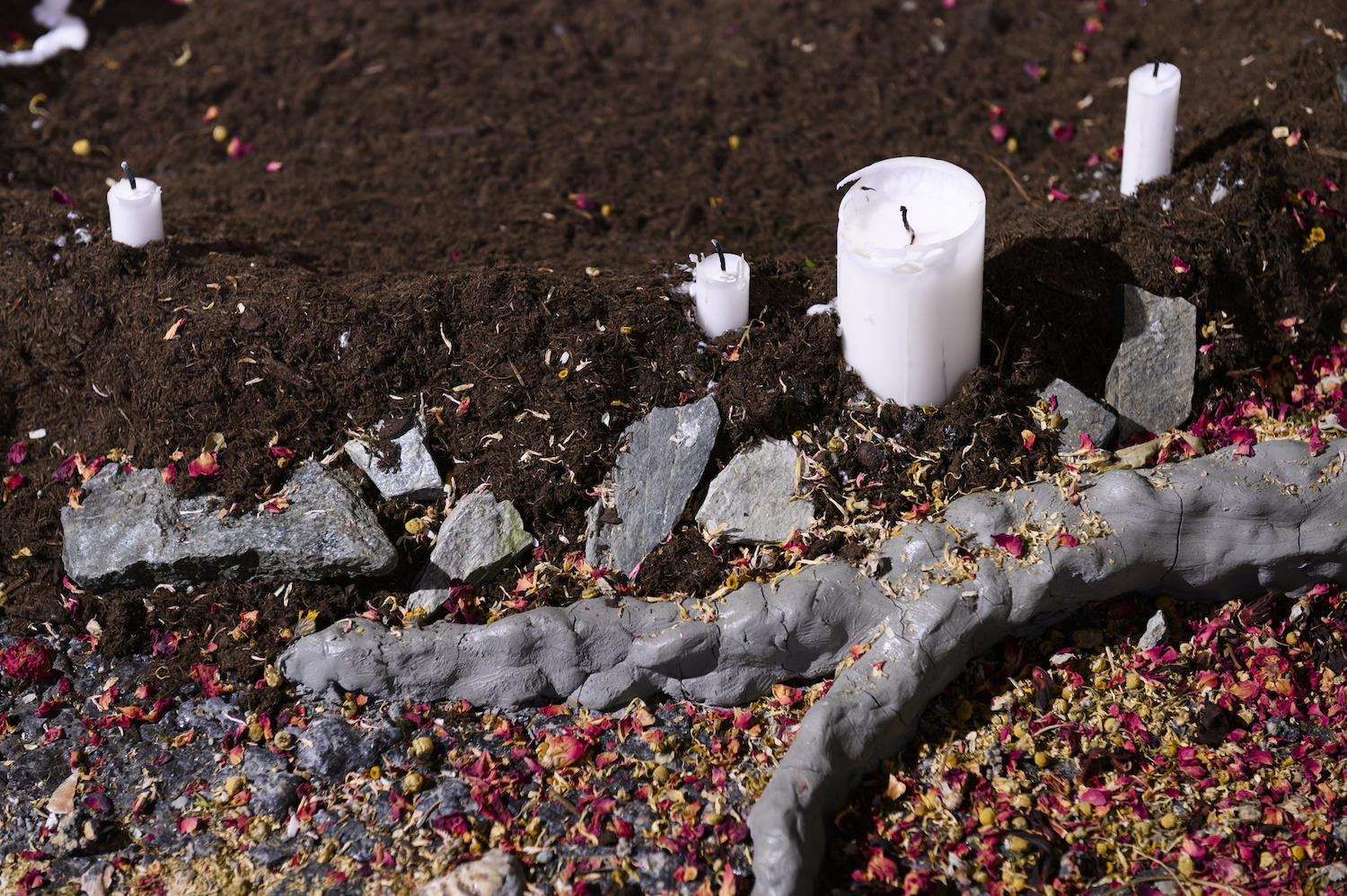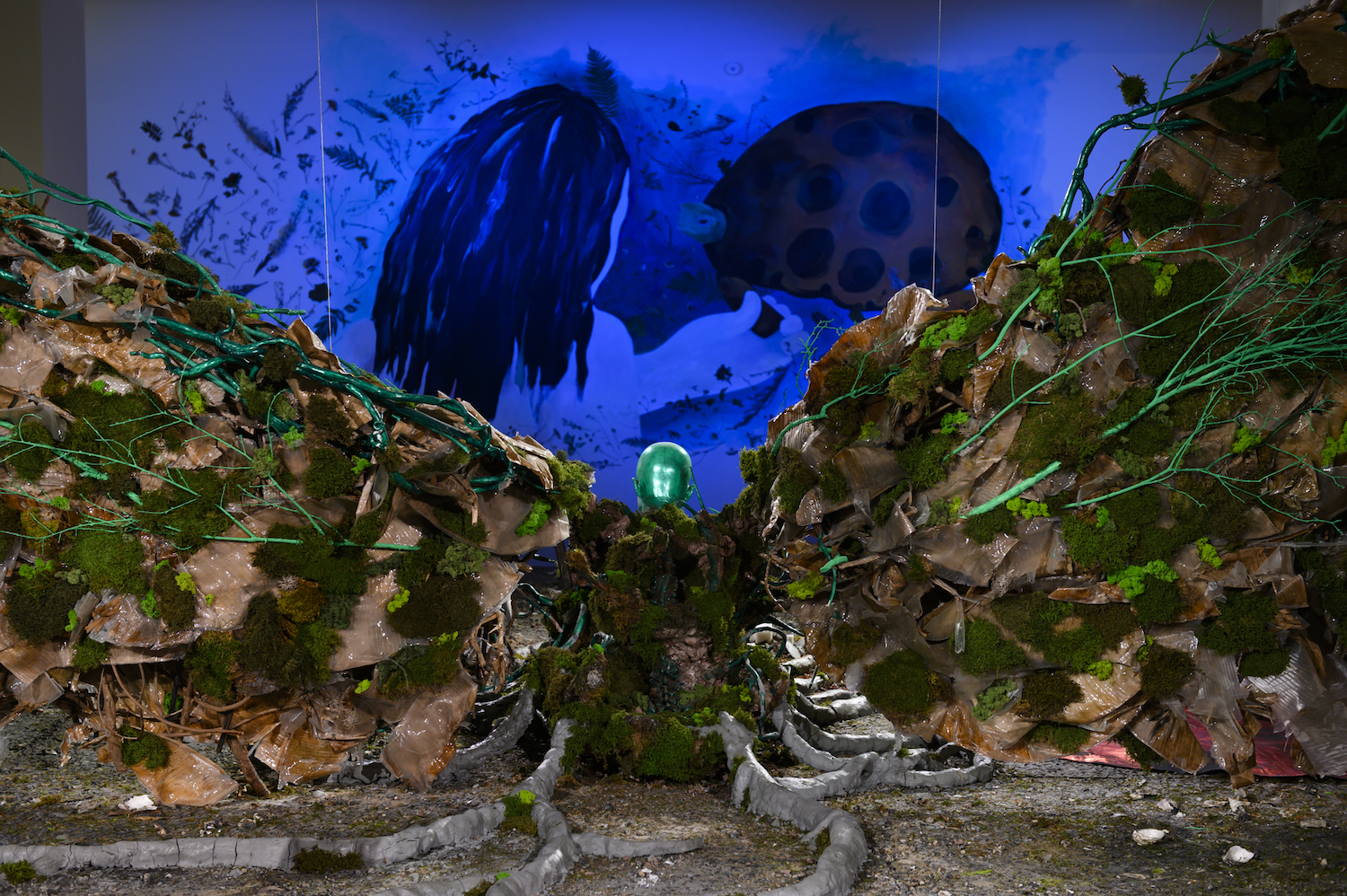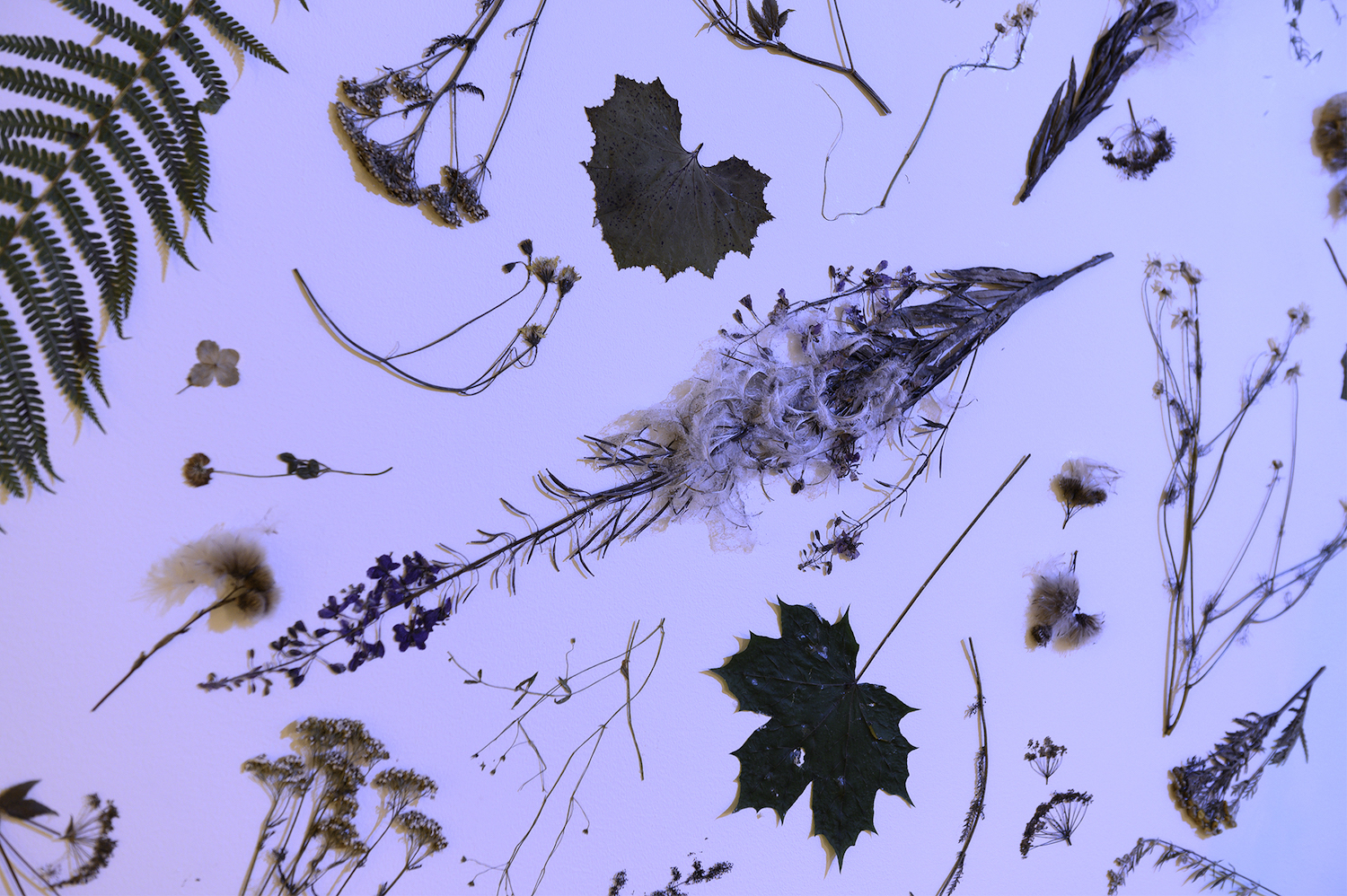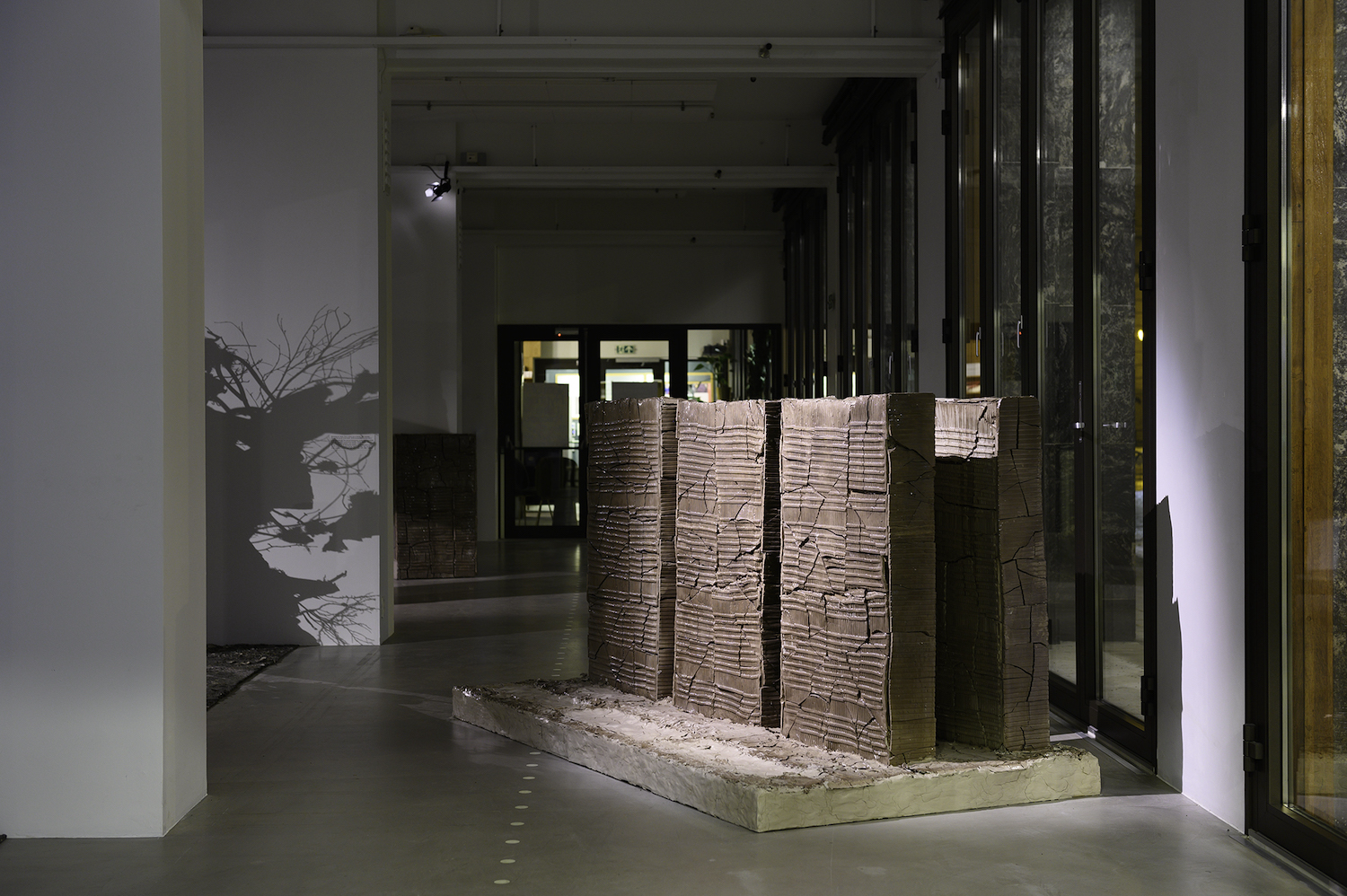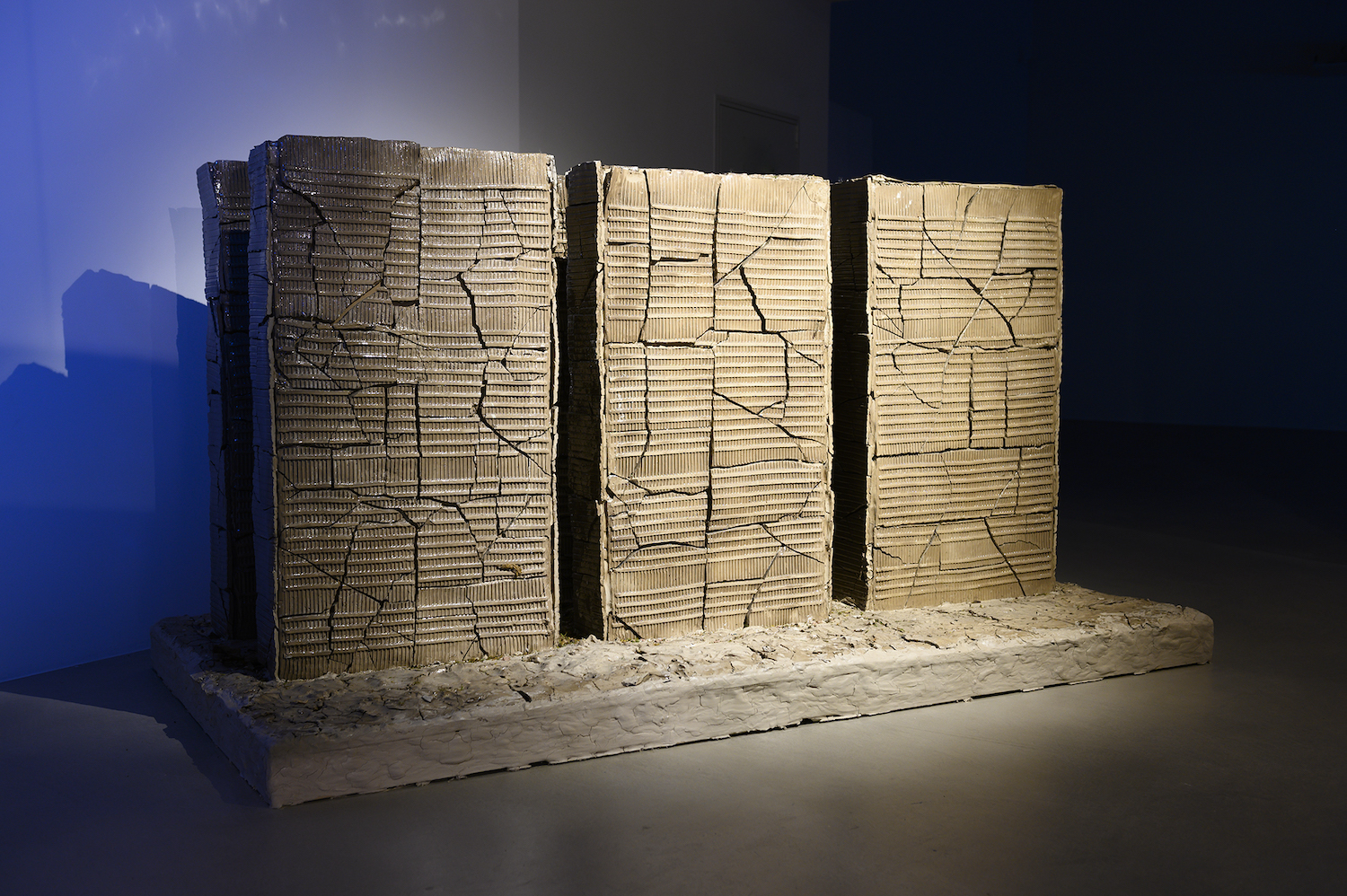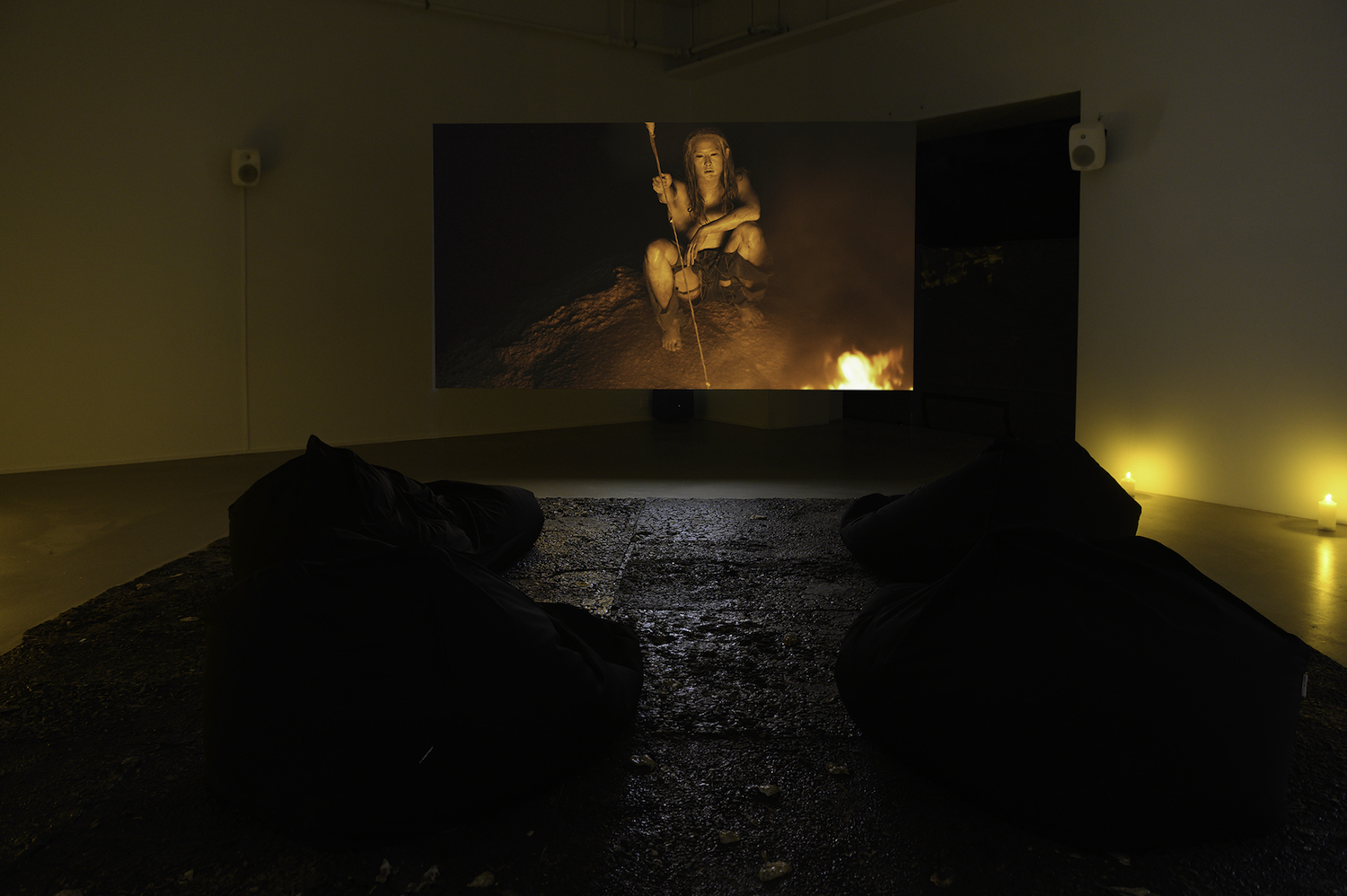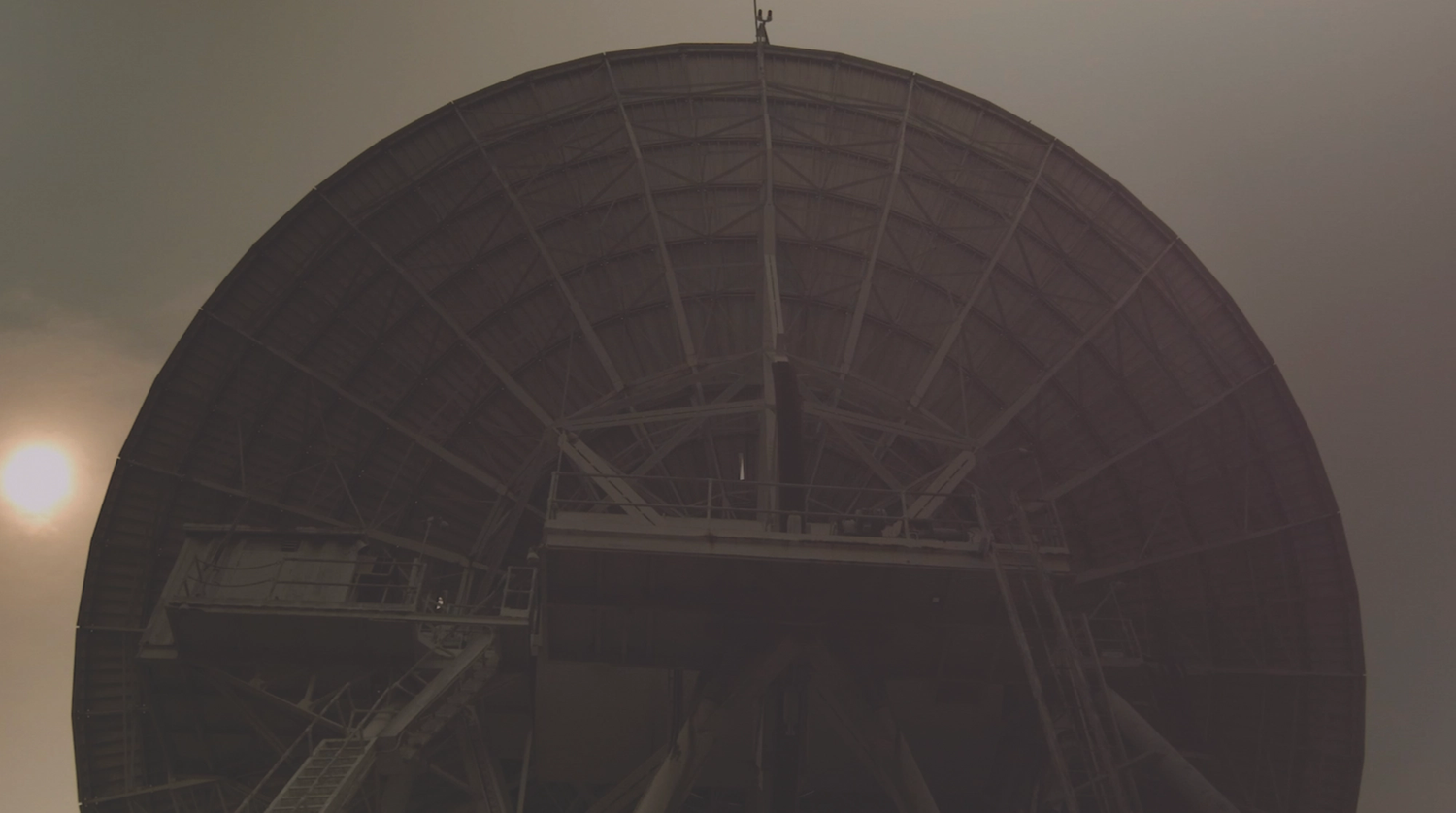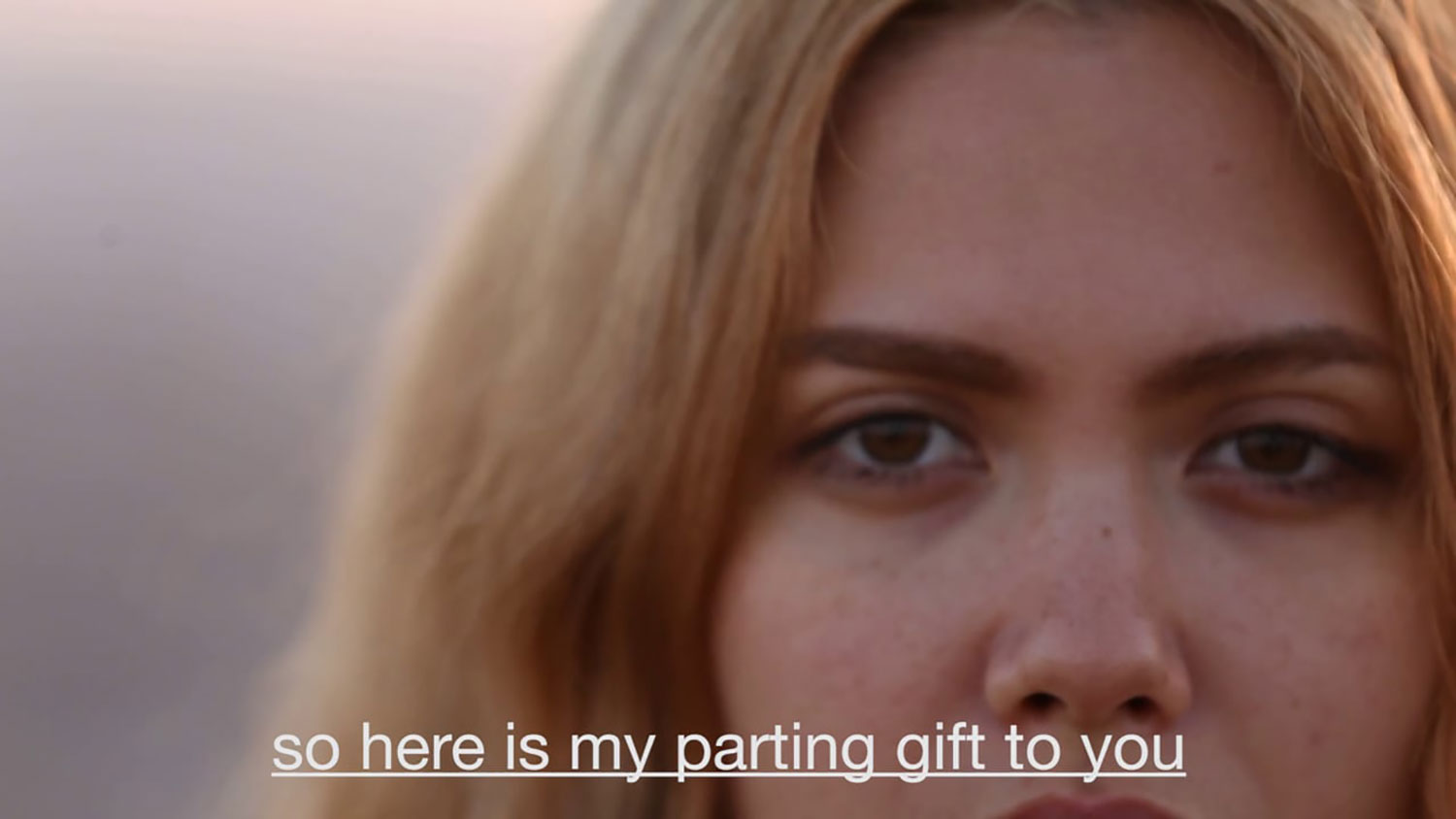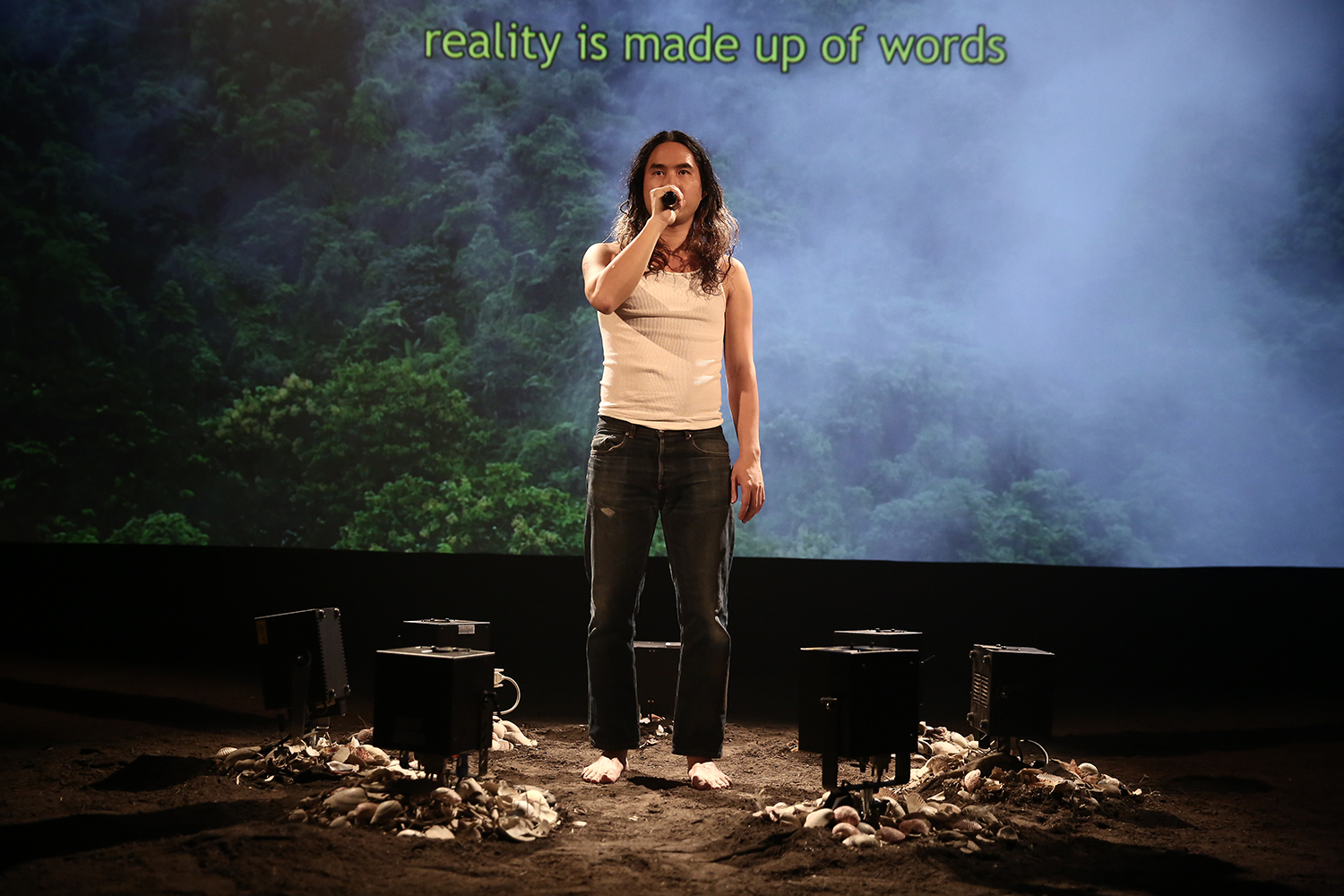Korakrit Arunanondchai, Workshop for Peace, from a place/ not so familiar/ but relatable/ through the sound/ of its breath, 2018 (reworked 2021). Detail. 23 clay models of UN Secretariat building, cast of boychild’s head and of artist’s grandfather’s hands, fabric, blue clay, clay, wood, metal armature, banana leafs, soil, resin, moss. Photography by Daniel Vincent Hansen. Courtesy of the artist; Bangkok CityCity Gallery, Bangkok; Carlos/Ishikawa, London; C L E A R I N G, New York / Brussels.
Korakrit Arunanondchai, Workshop for Peace, from a place/ not so familiar/ but relatable/ through the sound/ of its breath, 2018 (reworked 2021). Detail. 23 clay models of UN Secretariat building, cast of boychild’s head and of artist’s grandfather’s hands, fabric, blue clay, clay, wood, metal armature, banana leafs, soil, resin, moss. Photography by Daniel Vincent Hansen. Courtesy of the artist; Bangkok CityCity Gallery, Bangkok; Carlos/Ishikawa, London; C L E A R I N G, New York / Brussels.
Korakrit Arunanondchai, Workshop for Peace, from a place/ not so familiar/ but relatable/ through the sound/ of its breath, 2018 (reworked 2021). Detail. 23 clay models of UN Secretariat building, cast of boychild’s head and of artist’s grandfather’s hands, fabric, blue clay, clay, wood, metal armature, banana leafs, soil, resin, moss. Photography by Daniel Vincent Hansen. Courtesy of the artist; Bangkok CityCity Gallery, Bangkok; Carlos/Ishikawa, London; C L E A R I N G, New York / Brussels.
Korakrit Arunanondchai, Workshop for Peace, from a place/ not so familiar/ but relatable/ through the sound/ of its breath, 2018 (reworked 2021). Detail. 23 clay models of UN Secretariat building, cast of boychild’s head and of artist’s grandfather’s hands, fabric, blue clay, clay, wood, metal armature, banana leafs, soil, resin, moss. Photography by Daniel Vincent Hansen. Courtesy of the artist; Bangkok CityCity Gallery, Bangkok; Carlos/Ishikawa, London; C L E A R I N G, New York / Brussels.
Korakrit Arunanondchai, Workshop for Peace, from a place/ not so familiar/ but relatable/ through the sound/ of its breath, 2018 (reworked 2021). Detail. 23 clay models of UN Secretariat building, cast of boychild’s head and of artist’s grandfather’s hands, fabric, blue clay, clay, wood, metal armature, banana leafs, soil, resin, moss. Photography by Daniel Vincent Hansen. Courtesy of the artist; Bangkok CityCity Gallery, Bangkok; Carlos/Ishikawa, London; C L E A R I N G, New York / Brussels.
Korakrit Arunanondchai, “Songs for dying” Exhibition view at Kunsthall Trondheim, 2021. Photography by Daniel Vincent Hansen. Courtesy of the artist; Bangkok CityCity Gallery, Bangkok; Carlos/Ishikawa, London; C L E A R I N G, New York / Brussels.
Korakrit Arunanondchai’s new exhibition “Songs for dying” explores the ghost as a metaphor for suppressed and overlooked histories. The exhibition comprises film, installation, painting on a large piece of denim textile, and a mural made from local flowers collected in Trøndelag.
The celebrated Thai artist’s newly produced film, Songs for dying, lending the exhibition its title, has its world premiere at Kunsthall Trondheim. The work examines the shamans’ ability to heal following the 1948 Jeju massacre in South Korea, personal narratives centred around the artist’s recently deceased grandfather, and pop cultural references from The Hunger Games film trilogy in the context of the current student protests in Thailand.
In a new mural created specifically for the exhibition, the artist depicts a tortoise, which serves as a symbol for the artist’s dying grandfather, surrounded by local flowers. A floor made of dirt mixed with latex paint, resin, and dried seashells makes up the landscape for an installation featuring a cast of boychild – an American queer performance artist and one of Arunanondchai’s main collaborators. The sculpture resembles the shamans of the film, and its wings are reminiscent of the Buddhist figures Naga and Garuda that recur in the artist’s universe. In its ambiguity, the sculpture symbolises a figure that embodies both authority, such as represented by the Thai king, and a break in the system, summoned by the protesters.
Korakrit Arunanondchai, The memory of you stand still and time passes through, 2021. Inkjet transfer, acrylic paint, varieties of pressed plant life picked in Trondheim. Photography by Daniel Vincent Hansen. Courtesy of the artist; Bangkok CityCity Gallery, Bangkok; Carlos/Ishikawa, London; C L E A R I N G, New York / Brussels.
Korakrit Arunanondchai, The memory of you stand still and time passes through, 2021. Detail. Inkjet transfer, acrylic paint, varieties of pressed plant life picked in Trondheim. Photography by Daniel Vincent Hansen. Courtesy of the artist; Bangkok CityCity Gallery, Bangkok; Carlos/Ishikawa, London; C L E A R I N G, New York / Brussels.
Korakrit Arunanondchai, Workshop for Peace, from a place/ not so familiar/ but relatable/ through the sound/ of its breath, 2018 (reworked 2021). Detail. 23 clay models of UN Secretariat building, cast of boychild’s head and of artist’s grandfather’s hands, fabric, blue clay, clay, wood, metal armature, banana leafs, soil, resin, moss. Photography by Daniel Vincent Hansen. Courtesy of the artist; Bangkok CityCity Gallery, Bangkok; Carlos/Ishikawa, London; C L E A R I N G, New York / Brussels.
Korakrit Arunanondchai, Workshop for Peace, from a place/ not so familiar/ but relatable/ through the sound/ of its breath, 2018 (reworked 2021). Detail. 23 clay models of UN Secretariat building, cast of boychild’s head and of artist’s grandfather’s hands, fabric, blue clay, clay, wood, metal armature, banana leafs, soil, resin, moss. Photography by Daniel Vincent Hansen. Courtesy of the artist; Bangkok CityCity Gallery, Bangkok; Carlos/Ishikawa, London; C L E A R I N G, New York / Brussels.
Korakrit Arunanondchai, Songs for dying, 2021. HD video. 30’18”. Co-commissioned by the 13th Gwangju Biennale, Han Nefkens Foundation and Kunsthall Trondheim. Photography by Daniel Vincent Hansen. Courtesy of the artist; Bangkok CityCity Gallery, Bangkok; Carlos/Ishikawa, London; C L E A R I N G, New York / Brussels.
Korakrit Arunanondchai, Songs for dying, 2021. HD video. 30’18”. Co-commissioned by the 13th Gwangju Biennale, Han Nefkens Foundation and Kunsthall Trondheim. Photography by Daniel Vincent Hansen. Courtesy of the artist; Bangkok CityCity Gallery, Bangkok; Carlos/Ishikawa, London; C L E A R I N G, New York / Brussels.
A new painting on textile features a large yellow bird, referring to The Hunger Games logo as a symbol of opposition to authoritarian rule. Scattered around in the exhibition space lay clay models of the UN building in New York City. This architectural body rose up from the ashes after World War II, springing out from a notion of world peace.
In Songs for dying, Arunanondchai unites the personal and intimate with the spiritual, the technological, and global politics. The exhibition spotlights how the past pulsates in the present, highlights alternative knowledge systems, and shows how bodies and spirits are interconnected in a greater whole. At a time marked by social and ecological urgencies, the exhibition offers audiences exuberant and simultaneously delicate experiences touching on deep human desires and fears.

